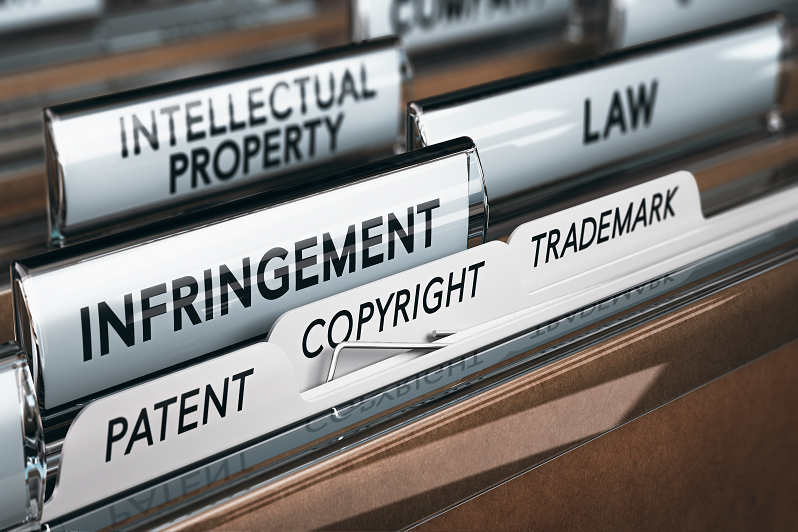Mobile apps have become an indispensable element of everyday life in the digital era. IP techniques assist mobile application creators and publishers generate more revenue from their products. The purpose of the article is to increase awareness of IP’s potential for making revenue in mobile apps and to provide tools for mobile app developers to use IP in their work.
Applicability of Intellectual Property on Mobile Applications
Mobile applications may be subject to several different intellectual property (IP) rights. In addition, most IP rights may be used to protect various aspects. A short description of these rights, including their nature, extent, and legal mapping, is provided below:
Copyright covers computer programs, which are the foundation for mobile applications. Copyright may also be used to protect the screen displays of mobile applications, regardless of the level of protection provided to the underlying computer software. It is critical to recognize that copyright does not protect a concept but simply its manifestation. While it might be challenging to discern between an idea and an expression, the difference is made by the creative choices. Copyright benefits from its informal nature; securing this protection is relatively inexpensive.
Additionally, it offers a lengthy period of protection. One issue to pay close attention to is copyright ownership. It is usually the author, although it may not always be the case if the work is generated. It is essential to be familiar with the legislation of any applicable country.
-
Patents Protection
However, patents tend to be more connected with industrial goods and processes than software-based things. In recent decades, the patent environment has altered significantly. As long as they meet patent law standards, software-related innovations may now be protected by patents.
Due to public policy issues, they often have difficulty creating patentable subject matter. Patent rights, unlike copyright, do not emerge spontaneously but must be registered. Typically, the application procedure lasts a few years; however, an application may be disputed at different stages, resulting in a longer wait time. Three to five years after an application is submitted, the European Patent Office (EPO) grants a patent. It consists of two major parts. Preliminary opinions on whether the claimed inventions and applications fit the European Patent Convention’s standards are provided in a preliminary examination (EPC). The second requires a more in-depth investigation. It’s important to note that software-related ideas are not barred from the patent system, although several common restrictions make it difficult to patent such inventions.
-
Trademark
When thinking about Mobile app protection under trademark, trade dress may not immediately spring to mind. However, it is an important consideration. For the most part, trade dress protects a product’s appearance, such as the product’s outward appearance or packaging. The graphical user interface (GUI) of mobile applications may be used to defend trade dress rights (GUI). The code, architecture, algorithms, data structures, and other parts of a mobile app crucial to its function and success are concealed from view under the app’s trade dress. Although the value of an app’s trademark should not be overlooked, the simplicity with which a user can engage and interact with an app’s graphical user interface (GUI) is critical. It’s one of the most important considerations for users. A developer’s ability to secure their GUIs against copycats is crucial to their success in the marketplace.
-
Trade Secret
Trade secrets preserve commercially valuable knowledge if the proper safeguards are taken to keep them confidential. Under national law, trade secrets are protected and do not need to be registered. Almost all intellectual property (IP) rights begin as a secret. It is common for inventions to be kept a secret until a patent application is filed. If it’s mishandled, the novelty criteria of the patent will be lost, and the application will be rejected regardless of how new and original the invention is. Similarly, a book’s plot is kept under wraps until its release.
When preparing for the launch of a new brand, marketing people will do the same. These early phases of conception are frequently vulnerable to theft. Thus they need to be protected.
-
Design Patent Protection
An app’s icon and user interface may be protected by a design patent in addition to its functionality under the umbrella of a utility patent. The owner of a design patent may prevent others from using an icon or interface that is sufficiently close to the patented design that a buyer would be confused about. A design patent is valid for fifteen years from the date of grant. Although a design patent’s scope is less than a utility patent, it is ideal for protecting an app’s icon and other graphical user interface features. Consumers and potential customers value these features, which is one of the main reasons for the app’s success.
How do you make agreements and contracts to protect your mobile apps?
In addition, when businesses get into any relationship, like with customers or with employees, the agreements and contracts they sign are significant. These agreements include Non-Disclosure Agreements (NDAs), Non-compete Agreements, Non-circumvention Agreements, Non-solicitation Agreements, Intellectual Property Licensing or Assignment Agreements, and so on. It is always a good idea to use the tools mentioned above in the right way to protect the Mobile App from current or future competitors.
The purpose of this article is to provide a general overview of the subject and should not be construed as legal advice. For more information on the protection of mobile applications under Intellectual Property, don’t hesitate to contact HHS Lawyers and Legal Consultants today.
Reference:
https://www.wipo.int/edocs/pubdocs/en/wipo_pub_1071.pdf

